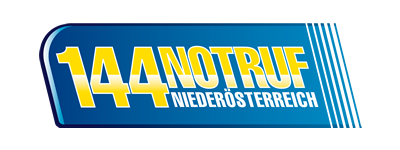Quick to the rescue with satellite navigation

The organisation
Notruf Niederösterreich is a non-profit organisation founded in 2003 that dispatches all emergency medical service agencies and special rescue crews in the federal state of Lower Austria. Rescue units include the mountain rescue service, water rescue, cave rescue, and the local ambulances.
On a yearly basis, the response centre reacts to about 1000 emergency incidents in exposed alpine areas of their federal state. In the most active parts of the skiing season, however, this number may increase to more than 25 injured skiers per day.
The challenge
For any emergency response situation, it is vital for the response unit to arrive quickly at the location of the person in distress. To do so, knowing the exact location of the person calling the emergency number is of great help and is the first question the response centre will ask the person calling the emergency number. However, situations do occur where the person who calls is either lost or in an area that they can’t name. As every second may count, any help in obtaining a more exact location, more quickly, more reliably is of great help to the emergency response units.
The solution
Satellite navigation can help to inform the response centre, as well as the first responders and rescue helicopters, to respond more quickly to an emergency call. In Lower Austria, the rescue centre, Notruf Niederösterreich, decided to make use of the Advanced Mobile Location (AML) system which is already available on all Android mobile devices worldwide.
The AML is a location sharing system that enables the user of a smart-phone to automatically share their location when calling the emergency number. A phone where the AML is supported and activated by the user will notice when an emergency number is called. This allows the phone to automatically turn on all supported location systems and send their coordinates via SMS and also via HTTPS transmission to the emergency response centre.
The service can be fully integrated with Public Safety Answering Points (PSAP), meaning the person using it will not need to have a special mobile app already download or think about submitting their position. Instead, the emergency response centre will know the location of the caller as soon as they answer the phone call.
The system will be supported by the great majority of phones and can be relied on more fully by emergency response centres. For instance, recently On the 24 January 24 2018, Apple announced that the AML system would be implemented in their iOS 11.3 update.
The result
Since the implementation of the AML, the emergency response centre could report that they have experienced great results in the alpine areas they cover. The main benefits are reduced average response times to calls, greater reliability in identifying the caller’s location, as well as simplifying the overall rescue efforts. They have also experienced it to be fast and simple, as well as comparatively cheap to other alternatives.
The service has proved to be highly reliable in different outdoor conditions in Lower Austria, working most of the time and so far only failing from calls made sub-surface. Tests carried out elsewhere have also shown that by using the AML rather than relying on the information obtained from cellular towers of which area the person is calling from, precision can increase up to 4000 times over.
Since the AML system is well integrated with PSAPs, the response centre can more fully depend on it to work and thus improve their best response workflow accordingly. This solution is ideal for the citizens who do not need to download a specific application but can instead rely on the standard emergency number.
“In my opinion, AML is one of the greatest innovations that I have seen in my 27 years in Emergency services. Referencing alpine emergencies our Mountain rescue service and the HEMS crews have been surprised about the precision of the locations when we started integrating AML.”
René Kerschbaumer
